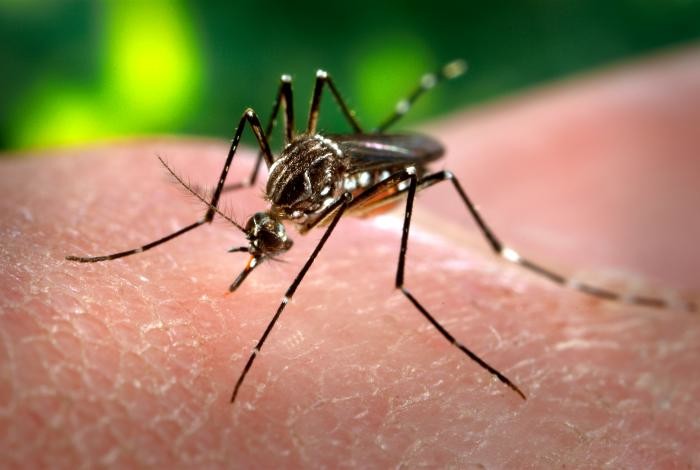May the force be with me
Case No. 3 of Chikungunya virus in Rhode Island speaks out
PROVIDENCE – As a traveler to Haiti for the past 20 years, people often ask me questions about health and safety issues there. While it’s true that one has to be extra vigilant about security issues, especially in Port au Prince, I usually feel quite safe in the rural areas where life is much calmer.
As for health concerns, I’ve been lucky to avoid getting any diseases in Haiti and long ago, stopped taking malaria prophylaxis because the side effects were pretty powerful. I got mosquito bites like everyone else but used repellent when I was outside at dusk – which in Haiti is hard to avoid since life in the rural areas is outdoors.
I’ve been receiving daily Google alerts for Haiti for many years, so I’m somewhat current about what’s happening there. In early May I began to read some news articles about a new disease that was rearing its ugly head in Haiti. I was a bit concerned, because I had a trip planned in the middle of May with a group of Bryant University MBA students and another faculty member.
This new disease is not actually a new disease but it is new to the Caribbean. Chikungunya, an African word meaning, “that which is bent over,” has been seen in Asia and Africa for many years.
In 2005 there was an outbreak on Ile La Reunion, off the coast of Africa. As a disease, it’s similar to Dengue fever; fortunately, the mortality rate with this disease is almost non-existent.
When the mosquito bites
Chikungunya virus is transmitted to people by mosquitoes. A mosquito bites a human who is infected with the virus and then bites a new person, transmitting the virus to the new person.
So it’s not contagious person-to-person but spread by the infected mosquito. And, it’s a pretty nasty virus. The most common symptoms of Chikungunya virus are high fever and joint pain. The onset of the fever is quite sudden and lasts for about three days.
The incubation period for Chikungunya is three-to-seven days. Other symptoms may include headache, muscle pain, joint swelling, and, if you’re really lucky, a lovely rash.
Outbreaks have occurred in countries in Africa, Asia, Europe, and the Indian and Pacific oceans. However, in late 2013, Chikungunya was found for the first time on islands in the Caribbean. I read on one of my Haiti Google alerts that there were 8 reported cases of the disease as of May 3rd. By May 31st, there were 31,000 reported cases.
The first two cases of domestically acquired cases of Chikungunya were reported in Florida on July 17, one in the Miama area and the other in Palm Beach. It’s believed that there are two types of mosquito that transmit Chikungunya – one is aedes aegypti and the other is the Asian Tiger mosquito. In the U.S., the Asian Tiger mosquito does exist in some Southern states but the other genus is not in the U.S.
In order for the virus to spread in the U.S., that genus of mosquito would have to bite an infected person and then bite another human. [As of July 2, the Centers for Disease Control and Prevention have reported that there are 134 cases of confirmed Chikungunya in the U.S. – all have been contracted while traveling to the Caribbean.]
Some public health professionals are concerned that it’s only a matter of time until the virus will be imported to new areas by infected travelers. There is no vaccine to prevent Chikungunya and treatment consists of rest, fluids and pain meds to treat the discomfort.
The other part of this disease is that once the viral illness appears to have gone away, people can continue to experience significant joint pain for weeks and months following the initial illness.
Hyper-vigilance
So, armed with this new information, I was hyper-vigilant with the students in May, reminding [nagging] them to put repellent on at dusk. As the week-long trip progressed, we began to see people suffering from Chikungunya and started reading up on it. We made sure the students wore repellent in the daytime as well, since this particular mosquito bites more often during the daytime.
We returned to the U.S. late on Friday night of Memorial Day weekend. On Saturday I woke up and felt some achiness in my legs and arms.
I attributed it at first to having done some hiking and lifting heavy objects while in Haiti. As the day progressed I felt other symptoms – overwhelming fatigue and fever.
I felt like I had been hit by a truck; I got in bed and emerged three days later. When I wasn’t in pain, I started reading up on Chikungunya and by day four, I had diagnosed myself with it. [Fortunately, no one else on our trip got it.]
My blood was sent to the CDC and two weeks later, I received the confirmation that I did, indeed, have Chikungunya.
There were already two cases in Rhode Island that had just been confirmed from people traveling to the Dominican Republic but my case, No. 3, was the first from Haiti. Experts predict that in time the majority of the population of Hispaniola will have had Chikungunya.
Precautions to take
However, if you are traveling to the Caribbean (and Central and South America) there are some precautions to take. In October I’ve organized a tour of Haiti with a small group of women, so I’ll be pushing all the preventive measures possible.
Travelers can protect themselves by preventing mosquito bites. When traveling to countries with Chikungunya virus, use insect repellent, wear long sleeves and pants, and stay in places with air conditioning or that use window and door screens. Apparently, there are shirts one can buy that are treated with repellent, and it’s recommended to wear them.
It’s been a long recuperation, and I am still not 100 percent. Mostly now I have pretty intense joint pain in my wrists, fingers and knees. I am living on ibuprofen and, of course, obsess over whether this is good for me or not.
The only silver lining is that I won’t get this disease again. Once and you’re done. For me this is a good thing, since I will continue to travel and work in Haiti.
I know more about Chikungunya than I care to know, but I recently learned a new fact that will impress my Star Wars-obsessed grandsons, ages 3 and 5. The mosquito that carries Chikungunya, the aedes aegypti, is called “The Darth Vader of mosquitoes.” How cool is that?







